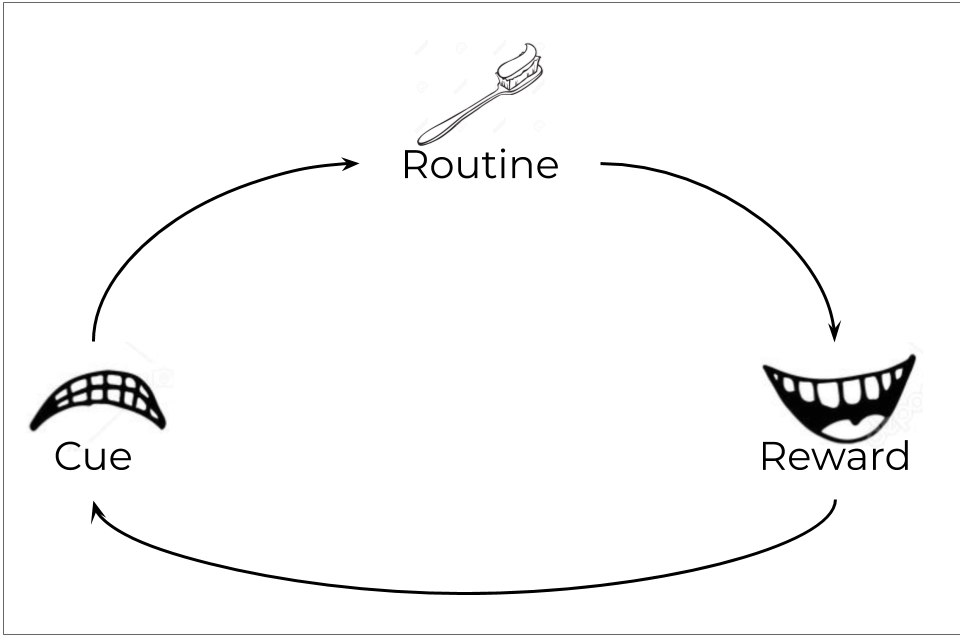In chapter 2 of The Power of Habit by Charles Duhigg, he titles the chapter with the amazing appellative “The Craving Brain.” Here we can read about how to Create New Habits.
To illustrate an example of a new habit, Duhigg uses the example of marketing Pepsodent toothpaste, by Claude Hopkins. Hopkins, in his own way, successfully (accidentally?) defined a craving. And with toothpaste, the craving to remove the not-so-desireable film on teeth redefined the cue (“yucky film on my teeth!”) which would in turn define the reward (“..mm, clean teeth!”)
“I resolved to advertise this toothpaste as a creator of beauty. To deal with that cloudy film.”
Claude Hopkins1, as quoted by Duhigg. Chapter 2, “The Power of Habit,” pg. 34
The cue, ‘tooth film.’
The routine, ‘brush your teeth, with Pepsodent.
The reward, beautiful teeth.

The key, Hopkins suggested was that he learned the “right human psychology.” The psychology is rooted in two basic rules:
- Find a simple, and obvious cure (*brush your teeth.)
- Clearly define the rewards (*no more teeth film.)
These two basic rules are now foundational elements for marketing, – find a clear solution to a problem.
What is fascinating, is those two rule aren’t sufficient on their own. A third rule needs to be satisfied to truly create a new habit. And that third rule is, craving.
Duhigg highlights what can be easily described as the Pavlovian test with monkeys. Once the monkeys see a collection of coloured squares on a screen (cue), the monkey pulls a level (routine) which then delivers a supply of juice (reward). This third rule is simply a craving.
Once the monkey established the pattern of seeing the coloured squares, pulling the lever, getting a sip of juice – this pattern established a neurological cravings whereby the monkey craves juice. And this craving drives the new loop/established habit of an anticipated reward.
The new habit is now triggered by craving the juice. And once the monkey sees the cue of the coloured squares, the habit kicks in – pull the lever, get some juice!
This is method is demonstrably replicated amongst technology. Easily demonstrated by the red notification circle/number on your smart phone.
Now the question (dilemma?) is what happens when the level of expectation isn’t matched by the reward? The juice isn’t sweet enough, or their is a misunderstanding in the words of a text?
Like a gambler pulling the arm of a slot machine, the routine, the habit loop replays itself over and over again to get a reward, from the cue that is the slot machine.

“Cravings are what drive habits. And figuring out how to spark a craving makes creating a new habit easier.”
— Charles Duhigg